The crazy dash from Ukraine to Spain in a Golf VI
After I got a car in 2022, I made the vast majority of my trips in it. The war in Ukraine, which left us without air transport, contributed significantly to this.
When I was visiting Ivano-Frankivsk in early spring 2023, after the death of someone close to me… A friend wrote to me. After the war began, they fled from Kyiv to Spain and invited me to stay with them for a week, to take my mind off things and enjoy the warmth.
I decided to agree. It wasn’t a long trip, but I wanted to test myself and my VW. Before that, the furthest I had traveled was Poland, although I regularly drove from east to west across Ukraine and back, sometimes every day.
My car had been serviced, so I didn’t need to prepare it much. I filled up the tank with diesel fuel the night before and planned to leave early the next morning.
This is where the adventure began. The city of Ivano-Frankivsk differs from many other cities in Ukraine in terms of its population, with a high proportion of recent rural migrants and a high level of religiosity. As a result, on Sundays, almost nothing is open except for the chain stores that have recently arrived. People are either at church or visiting their villages.
I needed to print out the Green Card insurance for the car and the health insurance I had purchased online the day before. It took us about two hours to find a place where I could print out these few sheets of paper.
After getting nervous and calming down, saying goodbye to my friends, I headed for the city exit. It was 12:00 noon, and outside the Golf, the temperature was 8°C. Ahead of me lay about 3,000 km and several days of continuous driving across Europe.
Google Maps plotted a route through Kalush – Dolyna – Vyhoda (with its beautiful narrow-gauge railway, which I will ride in the summer on my birthday).
In theory, after Soimy, I could have driven through Mezhigorye (not to be confused with Mazhigorye near Kiev, where the residence of former Ukrainian President Viktor Yanukovych is located). But the navigator decided otherwise and sent me through Izki – Volovets – Nizhniye Vorota. At that time, I still trusted this app, as it works quite well in Europe, unlike on the Balkan Peninsula.
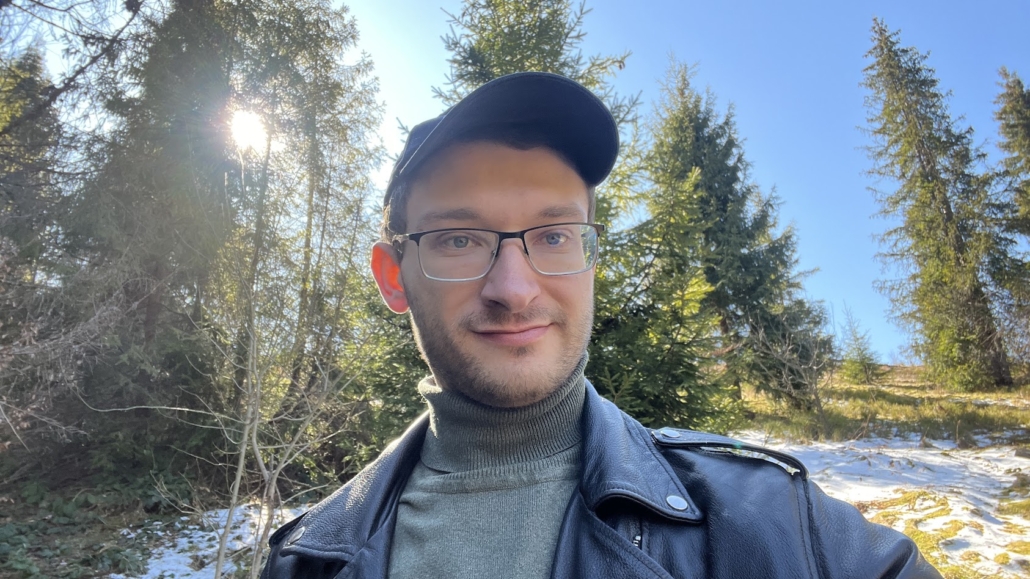
Not far from Podobovets, I took my first mini-break. I had some rolls with my favorite Ukrainian kefir, Galichina, branded under Karpaty, for a snack. Which seemed very symbolic to me.
All around is forest, and there is even snow lying in places. The sun is shining brightly, and fresh air fills my lungs. Ten minutes to warm up my legs, and then I need to move on, even though I want to walk around and take some good pictures. Nature is delightful!
The road goes through Volovets. Right after it, there are mountain passes with awesome views. Even though we just stopped, I get out again and walk around the car a bit. First, it’s pretty, and second, it helps make the long drive easier by getting my blood flowing. For long car trips, such breaks are a mandatory part of the program if you don’t want to shorten your life.
There is a roadside restaurant nearby. It’s pretty average, but the views are breathtaking. So when we go to Croatia this summer, we’ll stop here for a bite to eat and a photo shoot on the swings overlooking the mountains.
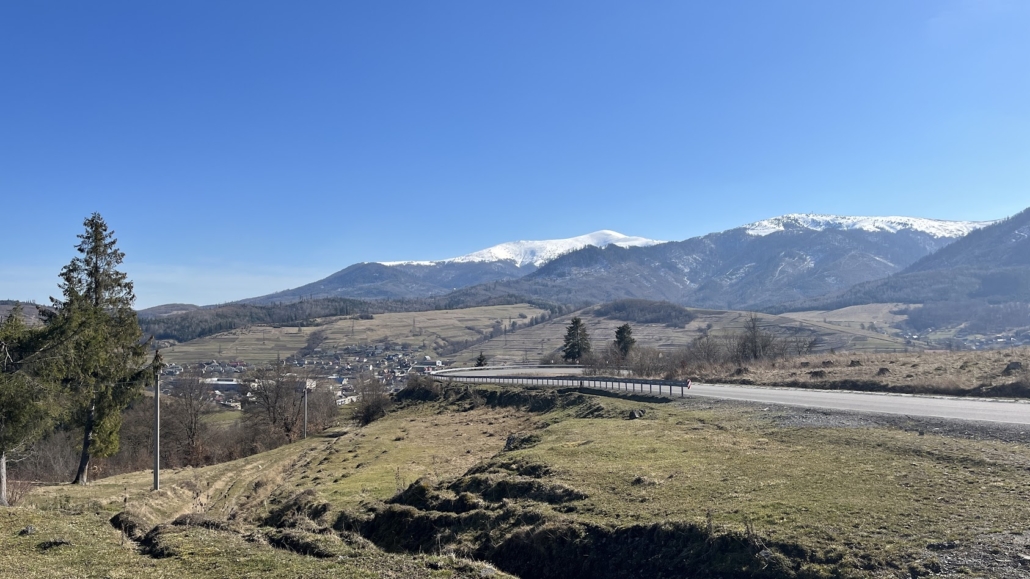
Meanwhile, I passed through Nizhniye Vorota and drove through Mukachevo. Not far from there, I filled up my tank at WOG, drove past the turn to the Schönborn Palace, where we used to hitchhike… And I saw Mukachevo Castle, which I had already visited, against the backdrop of the sunset, towering over the city.
It was decided to travel through Hungary. Therefore, the most convenient border crossing point seemed to be “Astey” Luzhanka – Beregsurany. To get there, you need to drive through Berehove (I was here in 2011 while passing through). Just keep in mind that the road to it is simply terrible. You can drive there during the day, but at night it’s easy to get a flat tire, as happened to me in the winter of 2023 when I was moving to Montenegro.
There was no queue at the checkpoint. That’s why I chose it. I drove up and there were only two cars in front of me. I drove straight to the checkpoint. Since men from Ukraine are practically not allowed to leave the country at the moment, I had to pull over and wait while the border guards checked my documents and made sure that I had the right to leave the country.
After a while, they brought back my passport and documents, and I was able to leave. Crossing into Hungary was much easier: they checked the trunk, asked where I was going, stamped my passport, and wished me a safe journey.
Immediately after crossing the border, I went to the nearest gas station. Hungary has toll roads, and I was driving on them. Payment is made for a period of time by purchasing an electronic vignette. To do this, you need to provide your vehicle registration certificate at the nearest gas station and pay the road tax. I bought one for 10 days (the minimum period). It cost me 5,500 Hungarian forints.
At the same time, right from the car (and thanks to Vodafone, my Internet plan in Europe was the same as in Ukraine), I bought a vignette for Slovenian roads online. It cost €15.
I passed through Hungary very quickly, driving not far from the border with Croatia, which a few weeks later finally joined the Schengen Area and removed border controls.
There are rest areas along the roads. These are exits where you can at least park your car, stretch your legs, and use the restroom. There are also large rest areas with gas stations and fast food restaurants. A few kilometers before the exit, there is a sign with pictograms showing what amenities are available at this particular rest area.
After filling up with coffee at gas stations, I entered Slovenia. Here, unlike in Hungary, toilets at gas stations are free and much cleaner and better maintained. When I reached one of the stops, I felt that it would be difficult to continue driving. Sleep began to overcome me, and caffeine was no longer helping. So I parked and decided to take a nap.
I slept for about two or three hours, I can’t say for sure now. Still, the temperature here is still low, especially at night, so it got cold in the car. But that was enough to help me recover a little. Another cup of coffee, multiplied by glucose and carbohydrates in the form of a Snickers bar, and I continue on my way.
I greeted dawn in Italy at a temperature of 11.5°C. Southern Europe in all its glory. Gas stations became dirtier, and the restrooms were downright depressing. The scenery along the highway, as everywhere else, was not particularly pleasing to the eye.
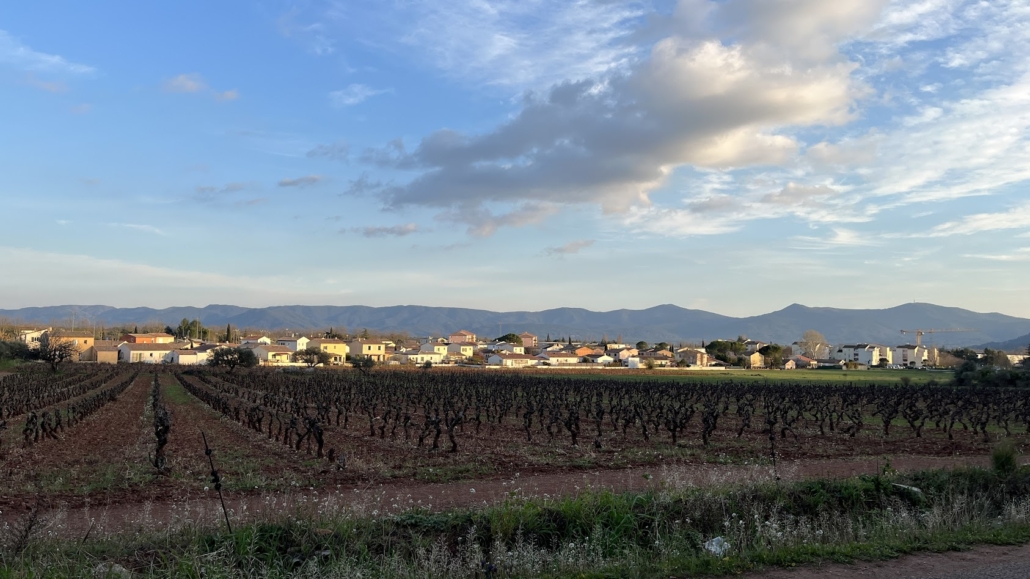
One of the gas stations sold cut fruit, so I took advantage of that. My modest breakfast consisted of a small cup of apples, pineapple, and strawberries. It was difficult to fill up on this, but it was very tasty and satisfied my craving. Especially considering that in Ukraine, no one sees strawberries until summer.
Roads in Italy are free of charge. Therefore, I maintain the maximum speed limit and proceed towards France. I unexpectedly pass through Venice, which I only discover a year later when reviewing my travel route.
I once drove off the highway to the town of Vogera to stock up on bread rolls, cheese, juice, and fruit at the local EuroSpin.
Somewhere on the coast of France, between Nice and Cannes, I decided it was time to give my body a proper rest. I booked a room in a hotel near Saint-Tropez and, to be honest, headed there with my last ounce of strength.
What a pleasure it was for me to take a shower after a day and a half on the road, change into much lighter clothes (the temperature here had already reached 21-23 degrees), have a snack, and fall asleep exhausted. There was no point or energy left to go anywhere or go for a walk. I decided to rest up so that I could continue without any breaks to reach my final destination, Alcossebre.
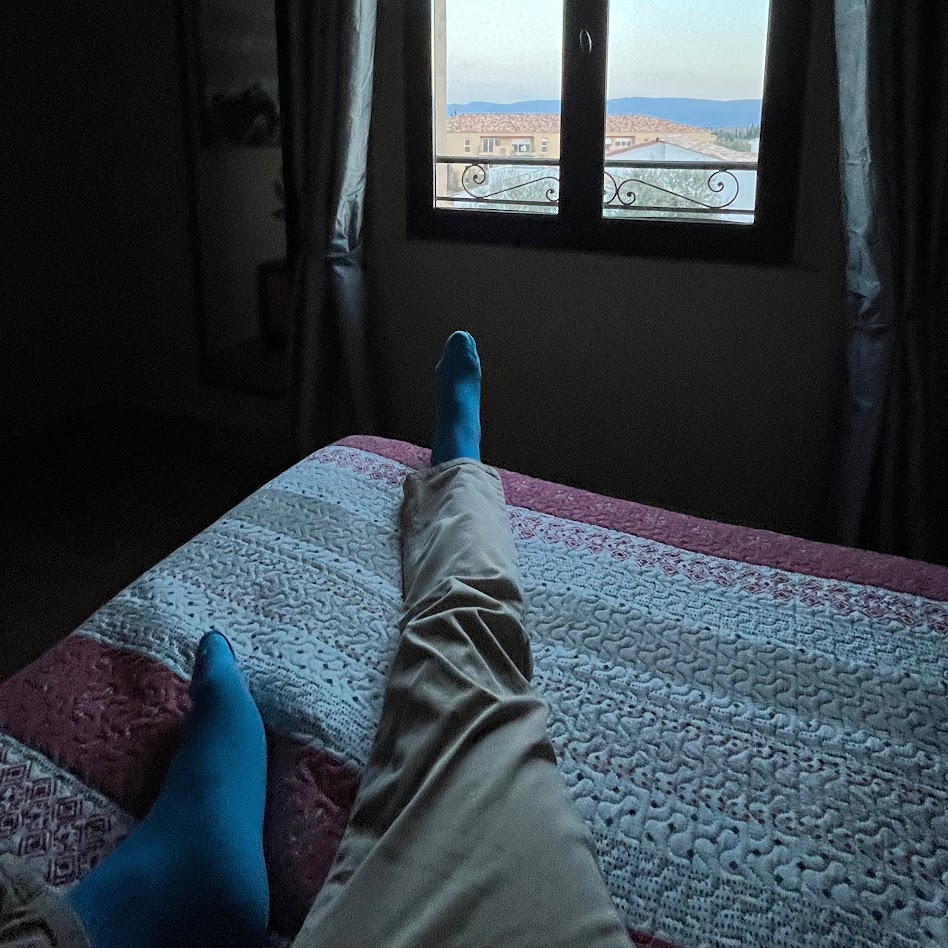
The entire stay with breakfast cost me $45.
The morning greeted me with bright sunshine and simply wonderful weather. The birds were singing loudly, and I went to meet the new day by the pool wearing only a T-shirt.
A light continental breakfast was waiting for me on the kitchen table. I ate some fruit and made myself some Nutella sandwiches. That’s when I tried it. It was incredibly delicious. I immediately googled this light gray bread with walnuts. It was sold at Lidl, and on the way home, I decided to buy some more.
After basking in the sun a little longer and giving comments to a journalist on the phone about the events in Ukraine, I loaded my things into the car and set off on my journey. Of course, I bought that very bread in the store, along with some kefir and orange juice.
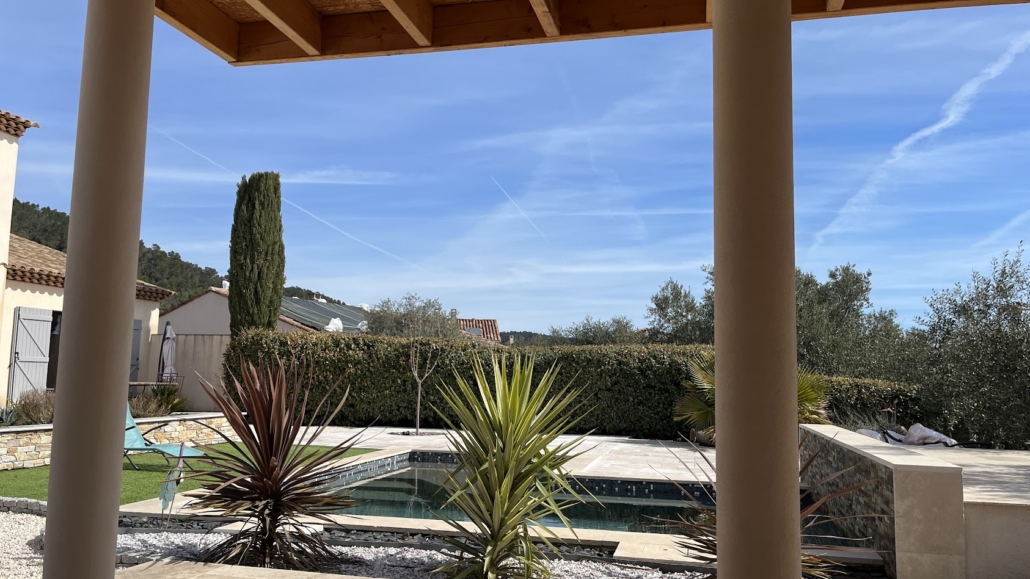
As I approached Montpellier, my phone suddenly started buzzing with warnings: you could only enter the city if you had a special environmental sticker. This is a popular “topic” in Europe these days, due to the environmental agenda. I will explain how to obtain one and why it is necessary in a separate article. At that moment, I was stunned. I had the sticker, but it had a different vehicle registration number on it. Now I realize that if I had driven on without stopping, no one would have noticed. But at the time, I didn’t understand how compliance with these regulations was monitored and whether it was possible to drive in France with my sticker, which was issued in Germany. To be on the safe side, I decided to leave the main road and take a detour around Montpellier.

It’s worth mentioning that, on the one hand, it took me an extra hour and a half. On the other hand, I got to drive through beautiful landscapes instead of boring highways. The same goes for the walk—now it wasn’t a parking lot near a gas station, but the cute little town of Ganj with a population of less than 4,000 people.
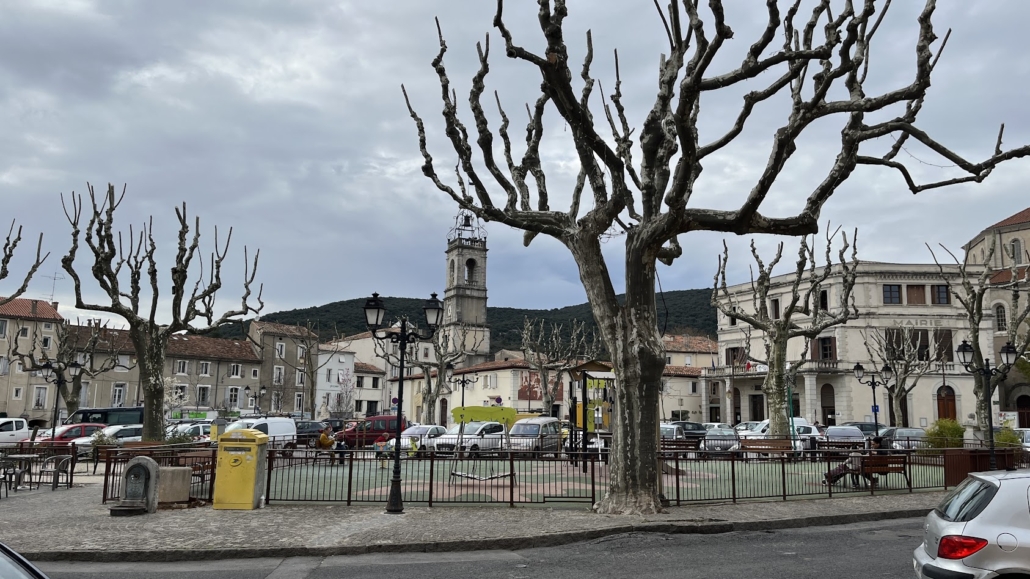
After Gange, I drove to Saint-Martin-de-Londres, where I turned onto a secondary road through Viollet-le-Fort, Puechabon, and Gignac.
Returning to the expressway, I found myself once again on a multi-lane road with very little variety in the surrounding landscape. My car didn’t have cruise control at the time (I only installed it a year and a half later, in Montenegro).
Suddenly, despite having roaming and downloaded offline maps in Google Maps navigation, the GPS started malfunctioning badly. Somewhere at an intersection, it started leading me in circles, as a result of which I twice entered a toll road and immediately exited it. Considering that the toll was about €15, this added a lot of stress and anger to my trip. In the end, I pulled over to the side of the road and quickly re-routed my trip in SygicGPS. A huge advantage of this app is that it shows lane movements. The third time I drove onto the toll road, I turned into the correct lane at the intersection and finally continued on my way without any problems.
At around 8 p.m. local time, I crossed the border between France and Spain. There was a café at one of the roadside gas stations, where I bought a salad and, after eating it, decided to drive straight to my destination. Which, in fact, I did. After midnight, closer to 1:00 a.m., I entered Alcocebre, which turned out to be a small tourist village on the Mediterranean coast.
Overall, the trip was interesting, but very tiring and expensive. A plane ticket would have cost me several times less, as would renting a car in Spain. However, I set myself the goal of getting there in my own car, and I did it
The main mistake was trying to get there as quickly as possible. It would have been much more interesting to take a week or two and drive slowly along secondary roads, stopping overnight and visiting many interesting sights along the way.
Soon I was driving back from Alcoserbe to Zaporizhia, but this time through Germany and Poland, having managed to break down in Vinnytsia. But that’s a whole other story.



Leave a Reply
Want to join the discussion?Feel free to contribute!